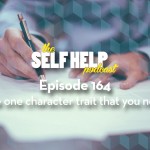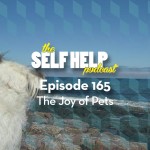The Joy of Pets
This week, as I write this blog I have been for a run with my trainer Conrad. As we ran down the lane I notice a brown dog ahead of us. She saw us coming and stopped to allow us to catch up with her. As we passed Conrad and I both naturally greeted her and she fell into step running between us. She seemed a perfectly nice and happy dog very comfortably joining in with us and it led to me wondering what was it that was going on in her mind. Did she feel that she had joined the pack? Was this the natural instinct of a pack animal off for the hunt? Perhaps she thought ‘two mad humans here running around, I wonder where they are going? I’ll go with them and see’, perhaps she thought, or didn’t, think of anything that I, as a human could conceive or understand.
We often treat animals anthropomorphically, just as I did with the dog, and -project our own feelings onto them and assume that we know what they are feeling or thinking. The worst thing that I ever hear is when a human projects a lack of feeling and emotion onto an animal. In an assumption that animal have no feelings at all. Fishermen tell me that when they stick a hook through the mouth of a fish, and pull them by the line from the water into the air, something that is suffocating for the fish, that the fish doesn’t feel a thing ‘because they are cold blooded’, interesting thinks I.
I find it strange that we divide up the animal kingdom into different emotional categories to suit our human selfishness.
Nature
There are those animals that live in the wild. These might include primates, the large cats, lizards, birds, elephants, rhinos, zebras and so on. We humans make documentaries about them and wonder at their life styles and antics, their social connections and disputes and their various mating rituals and habits.
Vermin
Vermin are those animals that we as humans have decided have no use for us, not even as objects in documentaries. Those that we decide should be removed from the planet. So we trap them, poison them and kill them in any way that we can. For householders these include rats, mice, spiders, ants and so on. Non householders might include the coypu, mink, snakes, foxes, badgers, crows, magpies and so on.
Food
The animal group that we have defined as food varies from one country to the next and we can share our disgust at each other’s habits. When a country eats frogs, dogs, or horses Brits can become very angry or disgusted. A while ago horse meat was found in British mincemeat which upset a lot of people, yet the French will happily take our horses for their dinner table while we will take their cows for ours. The staple meat diets of the western world has been cattle, sheep and pigs plus the occasional goat. We will eat chicken and ducks but will be disgusted by those that eat song birds. We make the distinction between Kentucky Fried Chicken and Kentucky Fried Rat, though they would probably taste and feel very similar once the spices had been added to the coating. For some rabbits are simply four legged chickens while for others they are cuddly bunnies and venison may be seen as strong beef or the murder of Bambi.
Fashion
If you wear a leather pair of shoes or a leather belt you are wearing an animal for fashion. The reality is that there are many alternatives to leather but if you eat the meat I guess that you might as well wear the skin. However, this does not seem to hold true in the case of fur. Would a fur coat be more acceptable if we ate the meat as well as wearing the skin? The British army has spent generations wearing bear skin hats, I doubt if they ate the meat.
Pets
Pets are animals that we assume like to be with us. We use animals without really understanding what it is that they want or need. Before a horse allows a rider to sit on it’s back it has to be ‘broken’. This means that it’s will to resist, and simply be a horse, is stripped away from it until it will tolerate the rider and respond to being directed by a piece of metal in their mouth, often kicked in the sides and being beaten with a whip. We put birds in cages to prevent them from doing what is natural for them, flying. We take the doggie-ness away from a dog until it believes that is a part of a human pack.
The symbiotic connections
We hear stories of the dolphin who appeared in the sea and held a human up in the water until help arrived or they had taken them to the shallows so that they could then stand. There are those moments when an animal and a human just connect. Many dogs do have a symbiotic relationship with a human being. Their intuitive connection allows them to know and understand the humans feelings and to respond in a sensitive manner. This may also include bereavement at the loss or death of a human that they are close to. We see this as a wonderful example of how a dog can have deep feelings for a human. Perhaps we should realise that this is how dogs live in their normal situation and that the deep emotion that we see, and assume is for us, is really the emotional power that keeps the pack together. Just as dogs belong in packs horses belong in herds and were never designed to live on their own or with just a few other horses or human beings.
Unless an animal comes to you willingly, just like the dog who chose to run with Conrad and I for a while, we are interfering in it’s naturalness to make it be what we want it to be.
I often see pets who are not experiencing joy, the joy of pets is all on the part of the human who ‘owns’ and ‘controls’ them. As I sit in my studio I often hear two dogs in the gardens around me. One is very unhappy and cries a lot at being abandoned by its human owners. The other howls in a desperate attempt to call to other dogs as though it is playing out some strange memory of the pack. As it howls other dogs, even distantly, respond and on the air they have a conversation that I will never understand but I keep hearing the plaintive cry of ‘tell me I am not alone’.
If you have pets, eat meat or wear skins have a think about the joy of pets and other animals. Is the joy one sided? Is it all played out for the good of human beings? Do the animals have feelings and if they do are we responding to them?
Food for thought!
Take care and be happy
Sean X



Trackbacks & Pingbacks
[…] Sean wrote a blog post on this subject. Have a read… […]
Leave a Reply
Want to join the discussion?Feel free to contribute!